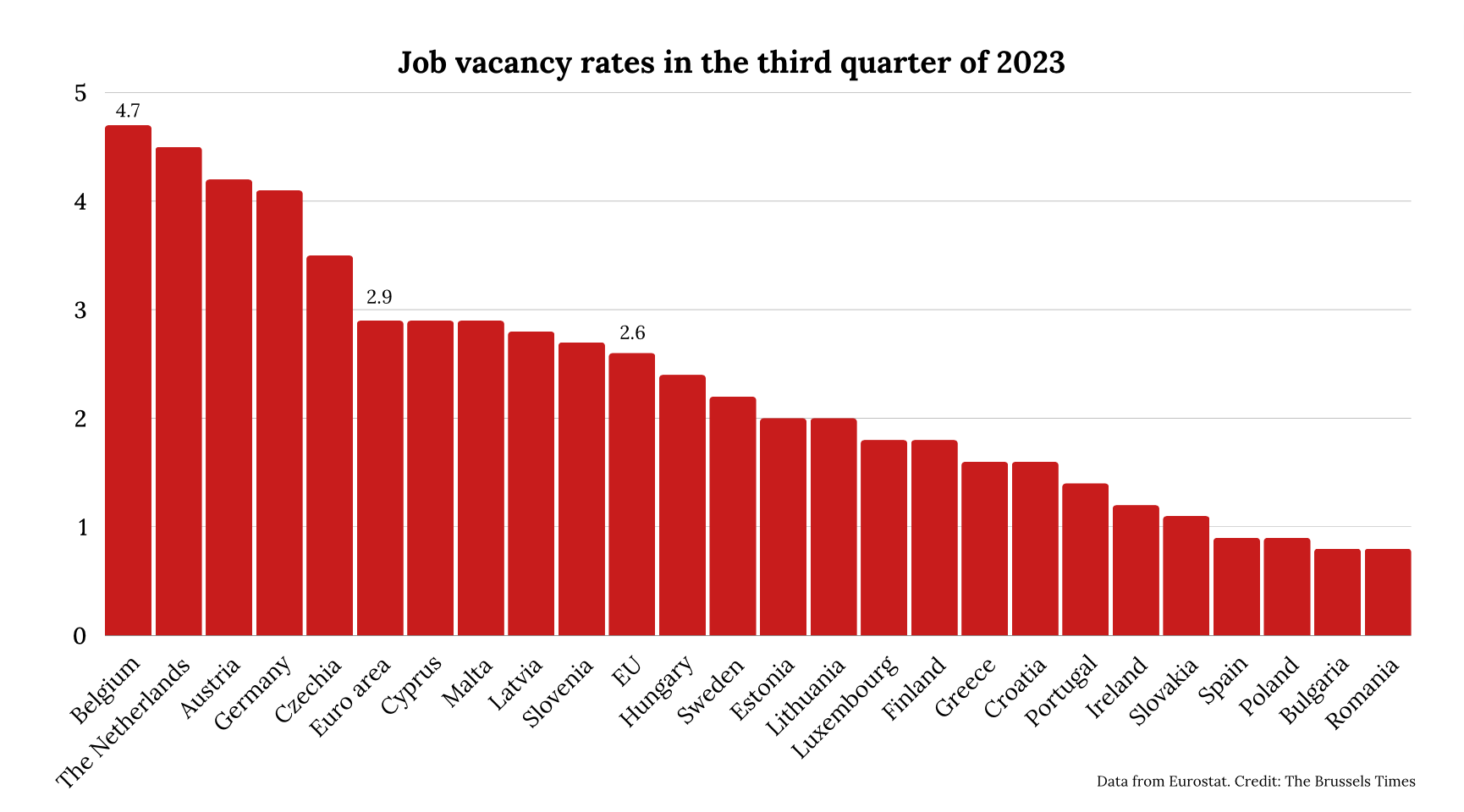Nowhere in the European Union are companies struggling to fill job vacancies more than they are in Belgium, the latest figures from the EU statistics office Eurostat show.
In the third quarter of 2023, the job vacancy rate stood at 2.6% in the European Union (EU) and 2.9% in the eurozone – down on both a monthly and annual basis, Eurostat reported on Monday.
"Among the Member States for which comparable data are available, the highest job vacancy rates in the third quarter of 2023 were recorded in Belgium," Eurostat noted.
Belgium's job vacancy rate stood at 4.7%, placing the country far above the EU average of 2.6%, and above the eurozone average of 2.9%. The job vacancy rate measures the number of vacancies compared to the total number of jobs.
Belgium was followed by the Netherlands (4.5%), Austria (4.2%) and Germany (4.1%). By contrast, the lowest rates were observed in Bulgaria and Romania (both 0.8%), Spain and Poland (both 0.9%), Slovakia (1.1%) and Ireland (1.2%).
The latest figures from Statbel noted that, in the third quarter of 2023, there were 198,724 vacancies at Belgian companies, up from 194,957 in the second quarter of 2023.
A very Belgian problem?
The situation has deteriorated since September, when Belgium had the second-highest number of job vacancies in both the EU and Euro area with a job vacancy rate of 4.6%.
The number of vacancies has grown steadily since 2013 and the country continues to grapple with a tight labour market. Data from June 2022 last year showed Belgium had the third highest number of vacancies in the EU, which was largely put down to increasing demand for personnel as a result of the fast economic recovery after the Covid-19 pandemic.
While the job vacancy rate has decreased from 4.9% a year ago, it has not dropped as quickly as other countries that have repeatedly been in the top 5. In Czechia, for example, the rate dropped from 4.5% at the end of 2022 to 3.5% now. In Austria, it dropped from 5% to 4.2% in the same period.
More than three-quarters (77.1%) of vacancies in Belgium are in five economic sectors: non-profit, science and services, manufacturing, trade and construction.
Across the EU and eurozone, administrative and support service activities are most affected by the high job vacancy rates, followed by "Professional, scientific and technical activities", the construction sector, the IT sector and the hospitality sector.
Related News
- Drivers' Day: At least 5,000 vacancies to be filled in Belgium
- Commission presents new measures to address labour shortages in the EU
The figures from Eurostat come in spite of an increase in employment in Belgium, which for the same period (2023 Q3) recorded a quarterly rise from 71.4% employment of 20-64 year-olds to 72.2%. The increase was especially visible in Brussels, which the national statistics office put down to a rise in activity.
Nonetheless, a nationwide rise in unemployment among 15-24 year-olds was observed, although this is not unusual during the third quarter of a year, when young people typically conclude their (higher) educational studies and are hunting for jobs.
When broken down between age categories, the differences in employment rates are starkly visible. In the third quarter 2023, the employment rate was 34.4% among 15-24 year-olds; 86% among 25-49 year-olds; and 67.4% among 50-64 year-olds.


